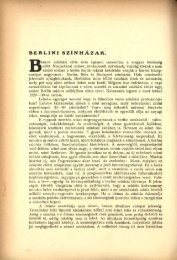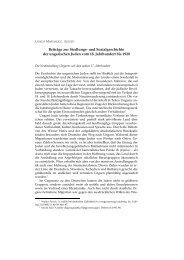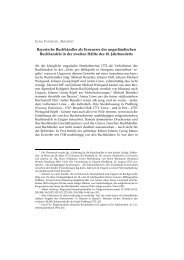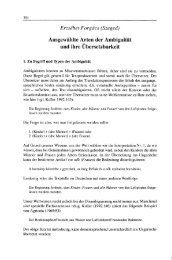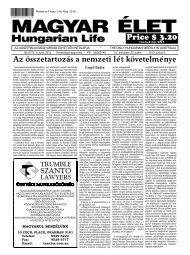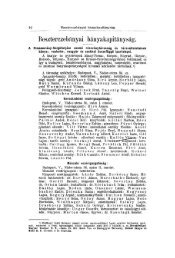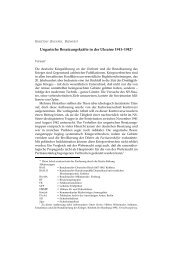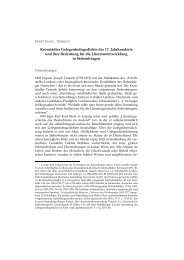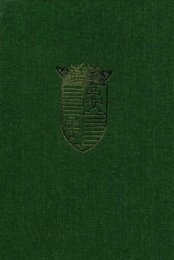Journal of Eurasian Studies - EPA
Journal of Eurasian Studies - EPA
Journal of Eurasian Studies - EPA
You also want an ePaper? Increase the reach of your titles
YUMPU automatically turns print PDFs into web optimized ePapers that Google loves.
July‐September 2010 JOURNAL OF EURASIAN STUDIES Volume II., Issue 3.<br />
_____________________________________________________________________________________<br />
resulted in a bad school system neglecting the state schools in the territories inhabited mainly by the<br />
Hungarians. 41 We agree with Seton‐Watson, as we spelled out above, that the Hungarian state should<br />
have done more to erect state schools with the languages <strong>of</strong> the non‐Hungarian nationalities as one <strong>of</strong> the<br />
languages <strong>of</strong> instruction or as the only language <strong>of</strong> instruction in mixed Hungarian‐non‐Hungarian<br />
territories and in territories where the nationalities lived, even if the state would have violated § 17 <strong>of</strong> the<br />
Law on Nationalities Act XLV. <strong>of</strong> 1868. Above we pointed out that in the educational system <strong>of</strong> dualist<br />
Hungary most <strong>of</strong> the schools were run by private non‐state agencies, like church dominations leading in<br />
fact to a marginal influence <strong>of</strong> the state in these schools. This was made possible by § 26 <strong>of</strong> the same law<br />
stipulating that private organization, like church congregations had the right to establish schools and to<br />
choose the language <strong>of</strong> instructions in these schools. The non‐Hungarian nationalities, especially the<br />
Romanians and the Serbs extensively made use <strong>of</strong> this right. This is also acknowledged by Seton‐Watson<br />
stating that the Serbs and the Romanians are more favorably placed than the Slovaks. 42 In conclusion, the<br />
Nationalities Law which was liberal in intent and content led to inconsistencies in the educational system<br />
at the disadvantage <strong>of</strong> the non‐Hungarian languages as language <strong>of</strong> instruction. The state should have<br />
supported the teaching in and <strong>of</strong> the languages <strong>of</strong> the non‐Hungarian nationalities in state schools but<br />
because <strong>of</strong> the liberal Law <strong>of</strong> Nationalities the state only controlled 12.34 percent <strong>of</strong> the primary schools.<br />
True in these schools the state could have done more to support the languages <strong>of</strong> the non‐Hungarian<br />
nationalities as language <strong>of</strong> instruction.<br />
Another asymmetrical development between the Hungarian versus non‐Hungarian primary schools<br />
set in with the Law on the Education <strong>of</strong> the Hungarian Language XVIII. 1879 that made the teaching <strong>of</strong><br />
Hungarian a compulsory subject in all primary schools (compare § 1 and § 4). The reason for this was to<br />
<strong>of</strong>fer all citizens the opportunity to learn the state language, i.e. Hungarian. 43 Furthermore, the law also<br />
specified that schoolteachers had to have a sufficient knowledge <strong>of</strong> Hungarian to be capable <strong>of</strong> teaching in<br />
the primary school (compare § 2‐3). Although this were reasonable provisions from the point <strong>of</strong> view <strong>of</strong><br />
the state the introduction <strong>of</strong> this law violated §17 <strong>of</strong> the Nationalities Law and did violate the autonomy<br />
<strong>of</strong> the churches. Consequently, I do not agree with Seton‐Watson that the introduction <strong>of</strong> the teaching <strong>of</strong><br />
Hungarian, the <strong>of</strong>ficial language as a compulsory subject a few hours a week was a grave mistake the<br />
Hungarian state made, for in this way the non‐Hungarian citizens could have been included in the<br />
communicational networks <strong>of</strong> the state. 44 This would have served their interest as well. Rather the neglect<br />
<strong>of</strong> the parallel introduction <strong>of</strong> the languages <strong>of</strong> the non‐Hungarian nationalities as a language <strong>of</strong><br />
instruction in the territories inhabited by them should have been a serious point <strong>of</strong> criticism.<br />
However, the Education Law XVIII. 1879 did not fulfill its expectations, as Seton‐Watson correctly<br />
points out admitting that Magyarization was not effective. 45 In 1890, eleven years after the introduction <strong>of</strong><br />
the law Hungarian as an obligatory subject was either not taught at all or was taught entirely without<br />
success in 34 percent <strong>of</strong> the non‐Hungary schools. The source <strong>of</strong> Seton‐Watson, departmental order nr.<br />
41 Compare Seton‐Watson (1907, 209).<br />
42 See Seton‐Watson (1907, 214).<br />
43 See Faluhelyi (1946, 121‐124) for Law XVIII. 1879.<br />
44 Departmental order nr. 72.000 <strong>of</strong> 1905 specified that in non‐Magyar primary schools with one teacher nine hours a week must<br />
be reserved for the teaching <strong>of</strong> the mother tongue and 8 hours for Hungarian.<br />
45 See Seton‐Watson (1907, 219).<br />
_____________________________________________________________________________________<br />
© Copyright Mikes International 2001‐2010 42



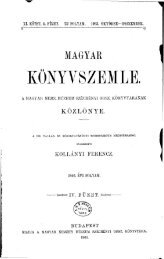
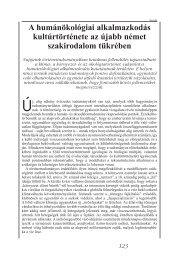
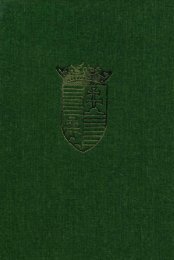
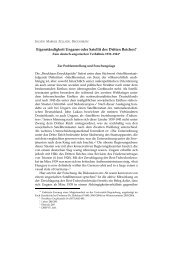
![Letöltés egy fájlban [36.8 MB - PDF] - EPA](https://img.yumpu.com/23369116/1/172x260/letoltes-egy-fajlban-368-mb-pdf-epa.jpg?quality=85)
